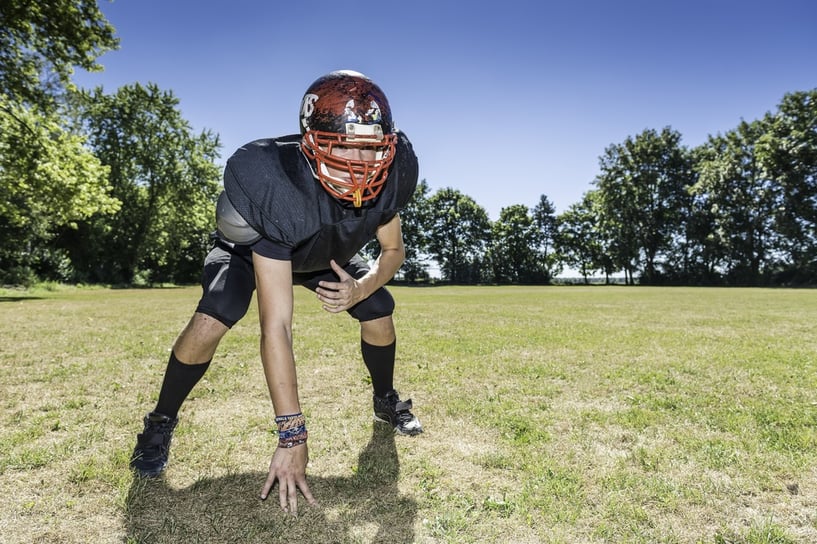High School Football Injuries and your Orthopedic Physician | Corpus Christi, Texas
August 22nd, 2016 | 5 min. read
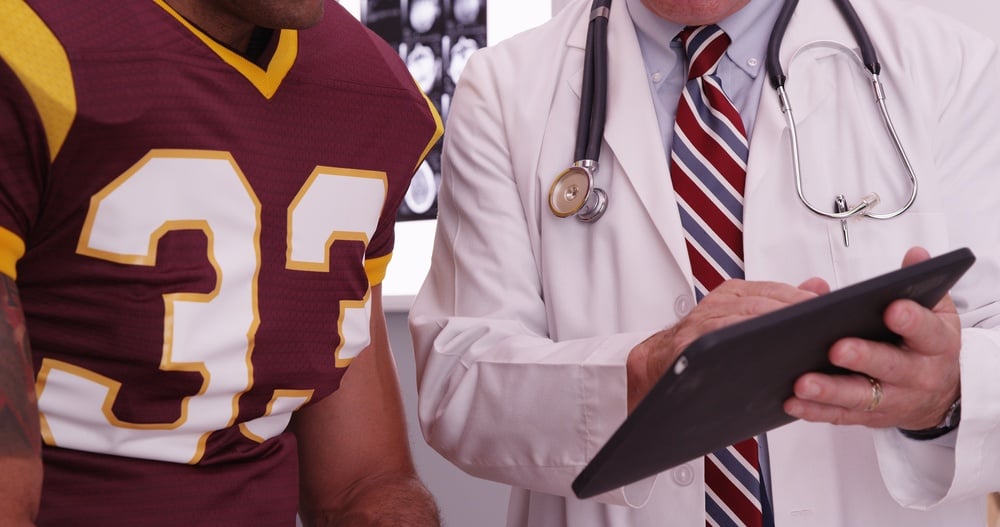
More than one million high school athletes play football in the United States each year. The sport is characteristically exciting, fast-paced, and physically rough, ensuring that every player will regularly experience all manner of bumps and bruises during their season. Despite the many injuries, high school football is actually a very safe activity. Largely thanks to advances in equipment, as well as evolving rules and regulations that emphasize the safety of the players, high school football has almost completely eliminated the risk of fatal injuries.
The number of fatalities occurring among high school football players has remained extremely low since the mid-1960s, when there were 26 fatalities (out of over 1,000,000 players) during a single year. That number has fallen greatly ever since, with most years seeing just single digits.
COMMON HIGH SCHOOL FOOTBALL INJURIES
The most common injuries for high school football players are ligament strains to the shoulder, knee, and ankle. The lower back is also susceptible. These are injuries which can be diagnosed and treated by an orthopedic physician. (Orthopedists can also prescribe specific exercise programs and refer athletes to sports medicine specialists.)
Life-threatening football injuries such as concussions and heatstroke or heat exhaustion sometimes pop up on the news, but they are much less common. Student athletes are far more likely to experience muscle, tendon, or ligament issues as described below.
Shoulder Injuries
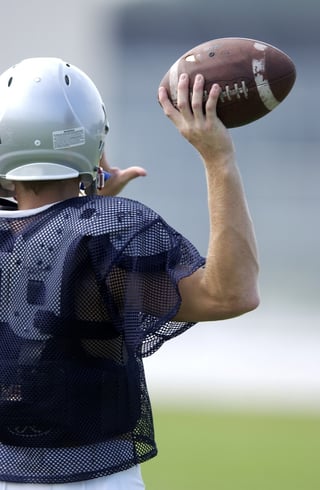
- Over-use injuries to the shoulder joint are common afflictions for a football quarterback.
- The powerful throwing motions required of this position put tremendous stress all through the shoulder, putting the player at risk for tears of the labrum (the ring of cartilage in the shoulder blade that keeps the arm in place).
- In addition, over-long practice sessions with repeated hard throws may result in classic over-use injuries, including tears and strains of the rotator cuff, ligament tears, and strained tendons.
- Impact injuries to the shoulder may be caused by gridiron falls, tackles, and collisions. Possible injuries include:
- Shoulder separations (of the acromioclavicular joint, or ACJ, located between the clavicle and the acromion bone on the tip of the shoulder blade)
- Dislocations (when a joint pops out of alignment: may involve the collarbone, breastbone, upper arm bone, and shoulder blade)
- Fractured or broken bones (the clavicle, shoulder blade, and upper arm bones)
Knee Injuries
The rapid starts, stops, and lateral turning motions (aka “cutting”) required in modern football put tremendous stress on a high school football player’s knees.
In addition, some orthopedic experts believe that the improved strength and speed of today’s players places more stress than ever on their knee joints, and compounds the risk of serious injuries.
Knee injuries may also occur from side impacts, overextension, and landings after high jumps.
The following knee structures are particularly susceptible to injuries on the football playing field:
- Meniscus. The menisci are pairs of thick, flexible pads of cartilage in each knee that act as cushions between the upper and lower leg bones. The meniscus may be damaged by high-energy twisting motions, resulting in meniscus tears. Torn cartilage in other parts of the knee are also possible.
- ACL/PCL Ligaments. Any player who hears their knee “pop” may be hearing damage to one of the four ligaments connecting the upper and lower leg bones.
- The ACL is the Anterior Cruciate Ligament. This runs diagonally on the inside of the knee and controls the forward movement of the leg bones. ACL tears may or may not require surgery depending on their severity.
- The PCL is the Posterior Cruciate Ligament. Paired with the ACL, this ligament prevents the leg bones from sliding backwards and out of position.
Foot and Ankle Injuries
Uneven surfaces and slippery footing are the main causes of foot and ankle injuries in high school football. Under the right conditions, both artificial turf and natural grass-and-dirt fields can be equally treacherous.
- Ankle sprains. Caused when ligaments are suddenly stretched beyond their normal limit, sprains may occur from falls, slips, and even stepping on an uneven surface.
- Broken Metatarsals. Five long bones connect the ankle to the toes. Known as the metatarsals, they are easily damaged if subjected to constant pressure.
Wearing appropriate equipment can prevent injury. For example, shoes with short cleats on the soles are safer on fields with artificial surfaces, while those with longer cleats are used on wet, slippery fields for better footing.
Lower Back Injuries
Overtraining Syndrome is most often diagnosed as the cause of lower back pain. This high school football injury occurs when a player practices, or trains, beyond the ability of their body to readily recover.
Life-Threatening Injuries
Life-threatening high School football injuries, such as concussions and heat-related ailments, are also common but are readily handled through proper supervision and coaching.
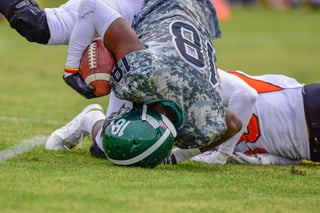
- Concussions. Most often caused by a hard impact to the skull, this condition is literally a bruising of the brain. For most everyday situations, the brain is sufficiently cushioned against impact by the meninges (layers of tissues covering the brain) and the liquid filling the space between the brain and inside of the skull. This liquid is called CSF, or cerebrospinal fluid.
In a concussion, the head is hit too hard for the CSF to do its job. The brain can actually impact against the inside of the skull, leaving a bruise, or contusion. Often the other side of the brain also receives a bruise, too, from the natural recoil of an impact.
Possible symptoms of a concussion include headache, dizziness, disorientation, and unconsciousness. - Heat–Related Ailments. High school football players can suffer heat exhaustion or heat stroke during hot, humid, and over-long outdoor training sessions. Adequate hydration is a key part of avoiding a heat-related injury.
PREVENTION OF COMMON HIGH SCHOOL FOOTBALL PLAYER INJURIES
Many excellent strategies to ameliorate the occurrence and severity of high school football injuries have evolved through the years.
Improved Coaching
Coaches have the responsibility to teach their high school football players correct mental techniques, not just to play cleanly and fairly, but also safely. Examples include:
- Proper tackling techniques, such as keeping the head up and not “leading with the head”
- How to balance the desire to play with common sense — e.g, not to play when hurt, and especially not to just “shake off” a potentially life-long injury just to “show your heart”
- Willingness to listen to a doctor when injured, and not to return to playing without medical clearance
- The importance of undergoing a complete medical health and wellness evaluation BEFORE beginning the high school football season
Lastly, coaches are responsible for the careful observation of every individual high school football player, and noting all potential injury issues before they become more serious conditions.
Improved Safety Equipment
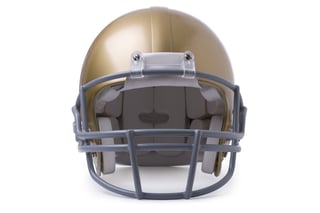 Contemporary football equipment has evolved greatly through the years in order to make the game safer. For example:
Contemporary football equipment has evolved greatly through the years in order to make the game safer. For example:
-
Football helmets began as simple leather caps, but now have highly effective safety features integrated into their designs, such as ear holes, face guards, connected mouth guards, and tough, lightweight, high-tech padding.
-
Football shoulder pads have been standard equipment for decades and have enjoyed the same high-tech evolution as the helmet. A high school football player’s upper body has never been more protected.
-
Lower body pads are now available to cover a player from the waist to the knee.
-
Flak jackets are available to quarterbacks to protect their rib cages.
Improved Injury Prevention, Physical Training, and Conditioning
The field of sports medicine has advanced incredibly in recent years. Not only can most injuries be treated more quickly and effectively than ever before, but also the prevention of sports injuries has become a sophisticated field of study itself.
However, the very basics of strength, flexibility, and endurance training remain the same in the prevention of high school football injuries:
- Increased conditioning of entire lower leg, especially knees and ankles
- Targeted stretching exercises on leg ligaments
- Specific muscle-strengthening programs targeting specific pains: for example, treating knee pain with a training regimen for the quadriceps (thigh) muscles
- Proper warm-up and cooling-down routines at every practice
And of course, proper hydration is a fundamental requirement for every high school football practice, training, and playing session. Hydrate, hydrate, hydrate!
When to See an OrthopediC PHYSICIAN
For football players, sometimes seeing an orthopedist before you have an emergency can improve your chances of staying healthy and in the game.
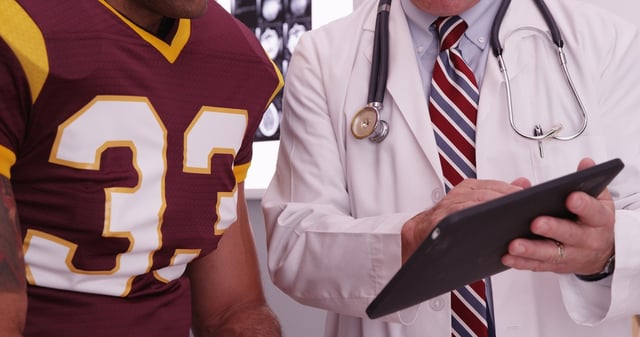
The best way to keep an injury from sidelining a player is prevention.
Many orthopedists now offer seminars and clinics in injury prevention techniques for athletes, often specifically tailored to football. Oftentimes, these clinics are offered pre-season or at the start of a season, and include conditioning programs such as shoulder conditioning or knee conditioning.
The second best way to keep a football athlete healthy is to seek immediate treatment when a problem arises.
If you are a player or a coach and you're concerned about the possibility of an injury to bone or tissue, the wisest course of action is to see an orthopedist as soon as possible. The risks of not treating an injury immediately can be serious.
At their worst, untreated concussions, fractures, and tissue damage can be dangerous. Even injuries that seem less serious on the surface can cause players a great deal of pain, inconvenience, time, and money as the problem compounds and leads to other health issues that may be more difficult (and time-consuming) to treat.
Any football player who has the symptoms of an injury should see a doctor immediately. A few weeks on the bench is far preferable to a season, or a career, cut short by a long-term injury.
To learn more about preventing and treating common football injuries, give Coastal Orthopedics located in Corpus Christi, TX a call. Telephone: 361.994.1166.
Article written by: Rob Williams, MD
Dr. Williams has been practicing orthopedic surgery in Corpus Christi since 1998. After graduating from Texas Tech hereceived his medical degree from the University of Texas at San Antonio. At the prestigious Campbell Clinic located at the University of Tennessee, Dr. Williams completed not only an Orthopedic Surgery Residency, but an additional year of Fellowship Training in Spine Surgery. Dr. Williams is dedicated to creating an excellent patient experience in the office or in the surgery suite.
Topics:

